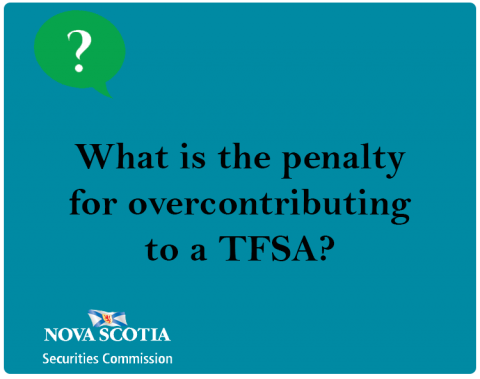Submitted by nsscadmin on

We went over Tax Free Savings Accounts (TFSA) in a previous blog post. As we explained in that post, a TFSA is an account that can hold cash or several different types of investments. While the investments are held in a TFSA, any investment growth is tax free and you don’t have to pay tax when you make a withdrawal.
TFSAs also have annual contribution limits. Any unused contribution space can be carried over to the following year. If you were to open a TFSA this year you would be able to use contribution space from every year since TFSAs were started in 2009.
One other important note on contribution limits. You can have numerous TFSAs, but your contribution envelopes all of them. For example, if I have $5000 remaining in contribution room and I have two TFSAs that $5000 in room is spread over both accounts. I do not get to contribute $5000 to each account.
So, what happens if you go over your contribution limit? Say you have $5000 in contribution space, but you miscalculated your room and accidentally contributed $6000. Any excess amounts contributed to a TFSA are subject to a one percent per month tax penalty. Using our $1000 overcontribution example from above, you would be required to pay $10 per month in penalties while the excess contribution remained in your account.
One common reason for overcontribution to a TFSA is withdrawal. At first glance that may not make sense. Here’s what we mean. When you withdraw from your TFSA account you regain some contribution room. However, you don’t get this contribution room immediately. The contribution room is not granted until January 1 of the following year. Anyone who were to contribute to their TFSA before January 1 believing they already have the extra room could be in danger of overcontributing.
